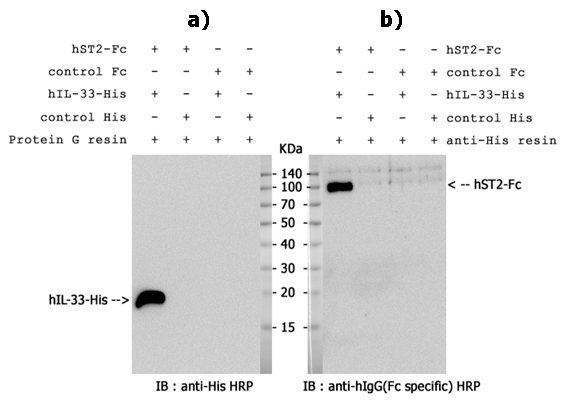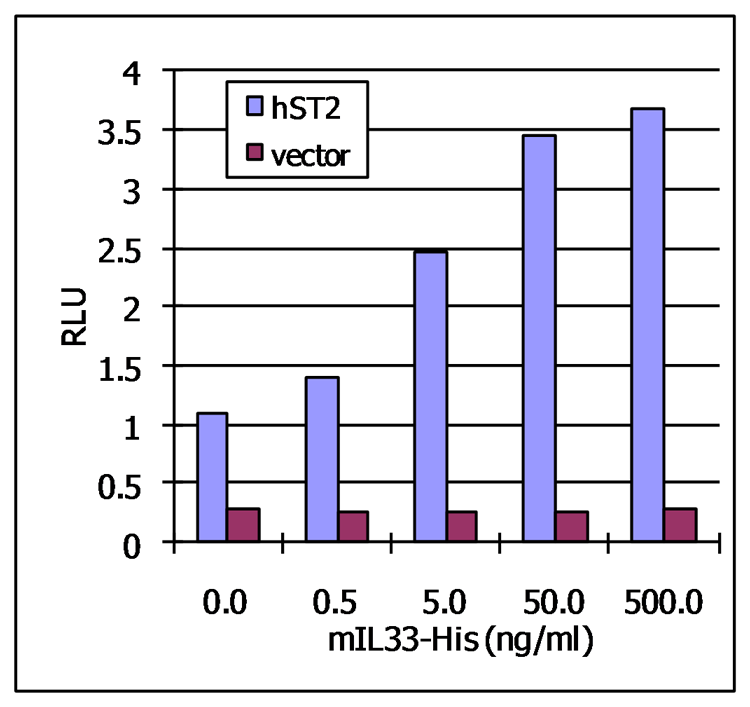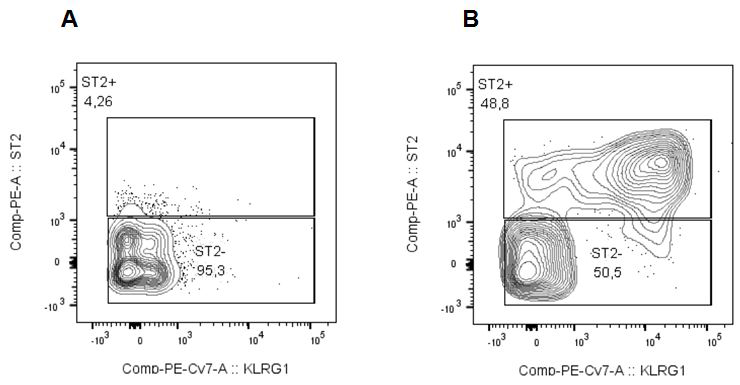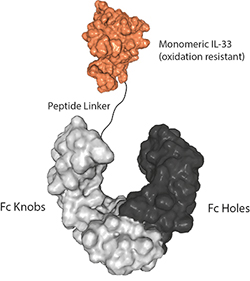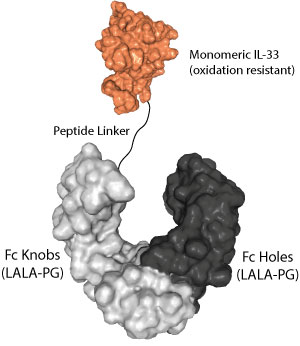IL-33 (human):Fc (human) (rec.)
CHI-HF-21033
Product group Proteins / Signaling Molecules
Overview
- SupplierChimerigen Laboratories
- Product NameIL-33 (human):Fc (human) (rec.)
- Delivery Days Customer10
- CertificationResearch Use Only
- Estimated Purity>98%
- Scientific DescriptionInterleukin-33 (IL-33; HF-NEV; IL-1F11), a member of the IL-1 family of cytokines, is expressed by many cell types following pro-inflammatory stimulation and is thought to be released upon cell lysis. IL33 binds to and signals through ST2 (IL1R1) and its stimulation recruits MYD88, IRAK, IRAK4, and TRAF6, followed by phosphorylation of ERK1(MAPK3)/ERK2(MAPK1), p38(MAPK14), and JNK. The ability of IL-33 to target numerous immune cell types, like Th2-like cells, mast cells, and B1 cells, and to induce cytokine and chemokine production underlines its potential in influencing the outcome of a wide range of diseases, such as arthritis, asthma, atopic allergy & anaphylaxis, cardiovascular disease/atherosclerosis, nervous system diseases, and sepsis. - Protein. The extracellular domain of human IL-33 (aa 112-270) is fused to the N-terminus of the Fc region of human IgG1. Source: HEK 293 cells. Endotoxin content: 98% (SDS-PAGE). Interleukin-33 (IL-33; HF-NEV; IL-1F11), a member of the IL-1 family of cytokines, is expressed by many cell types following pro-inflammatory stimulation and is thought to be released upon cell lysis. IL33 binds to and signals through ST2 (IL1R1) and its stimulation recruits MYD88, IRAK, IRAK4, and TRAF6, followed by phosphorylation of ERK1(MAPK3)/ERK2(MAPK1), p38(MAPK14), and JNK. The ability of IL-33 to target numerous immune cell types, like Th2-like cells, mast cells, and B1 cells, and to induce cytokine and chemokine production underlines its potential in influencing the outcome of a wide range of diseases, such as arthritis, asthma, atopic allergy & anaphylaxis, cardiovascular disease/atherosclerosis, nervous system diseases, and sepsis.
- Storage Instruction-20°C,2°C to 8°C
- UNSPSC12352202

